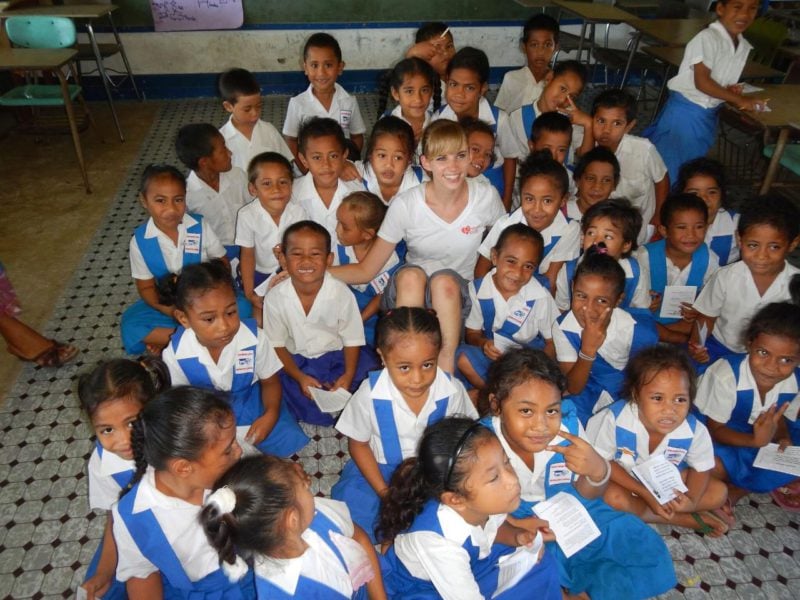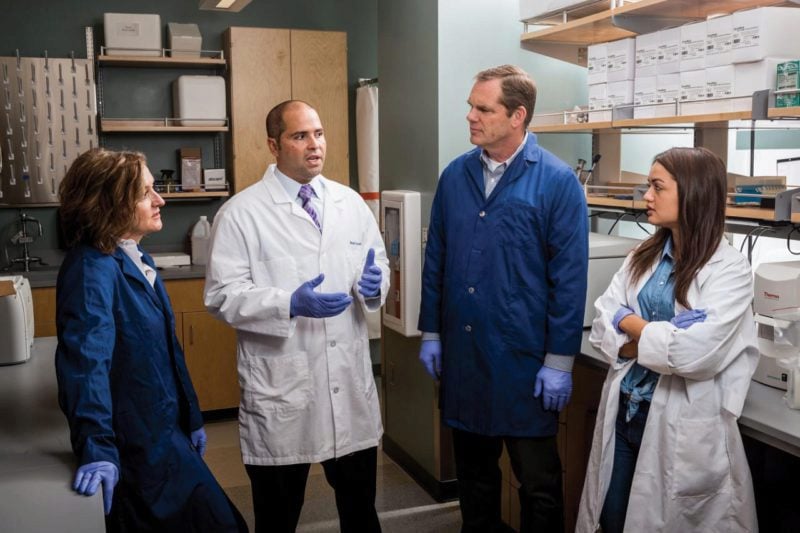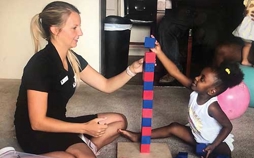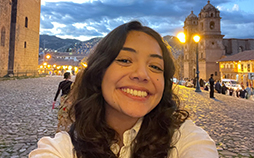BYU Working to Uncover How Media Affects Families
Project aims to understand the long-term effects of media on children.
November 2016

A team of healthcare professionals and BYU students traveled to Samoa to help children and families understand a deadly illness: rheumatic heart disease. Amid beautiful people and a tropical paradise, the students learned and taught lessons that forever changed their lives.
It has been reported that more than 30 million people worldwide are affected by rheumatic heart disease, leading to approximately 250,000 deaths every year. The illness afflicts primarily children 5 to 15 years old, but early detection through education and screening can prevent serious outcomes. Treatment can be as simple as receiving penicillin shots.
Enter students such as Brooke Spencer, a BYU biology major who spent two weeks in Samoa in summer 2016 volunteering with Rheumatic Rescue, a charitable organization based at BYU. Spencer’s mission: educate children and families about the disease and assist medical professionals with diagnosing it. It was a labor of love for children suffering from both the disease and misperceptions of their condition.
“The affected kids are very lethargic,” says Spencer. “It’s hard for them to walk or go out and play. Eventually these kids would die without diagnosis and treatment.”
Rheumatic heart disease strikes children in sub-Saharan Africa, southcentral Asia, and the Pacific. Overcrowding, poor housing, malnutrition, and limited access to healthcare make the disease a persistent problem around the world.
On the front lines of the battle against the disease, Rheumatic Rescue sends up to 15 students along with about 30 medical professionals to Samoa each summer. Students have the opportunity not only to help children and families affected by the disease but also to be mentored in conducting real-world research.
 Lori Allen, Keoni Kauwe, and Marv Allen (left to right), professors and leaders on Rheumatic Rescue team, mentor students in the lab and field. Student Brooke Spencer (right) was on the team that traveled to Samoa this summer.
Lori Allen, Keoni Kauwe, and Marv Allen (left to right), professors and leaders on Rheumatic Rescue team, mentor students in the lab and field. Student Brooke Spencer (right) was on the team that traveled to Samoa this summer.
Making a Difference
Keoni Kauwe, a BYU biology professor and a leader on the Rheumatic Rescue team, says: “I teach at BYU because I want mentoring to be part of my profession, to be part of my life. There are other places I could do my science, but they wouldn’t provide the opportunity for me to be involved this way. I think the most important thing about my job is making sure the students have a foundation for their future.”
Kauwe and other mentors involved with Rheumatic Rescue engage students in meaningful work that prepares them for success in their chosen fields. During this immersive internship, students participate daily in research and clinical work as well as in public health promotion to educate children and their caregivers about the disease.
“It is very humbling, but at the same time it is very motivating, to see what difference we are able to make in such a short period of time,” says Spencer. “It feels like there are endless possibilities with what I can do and how I can make a difference.”
The director of the program, Lori Allen, says, “The students learn in Samoan the educational presentation, which is a puppet show, script, and music. Then they all learn how to listen for heart murmurs. And they assist in the collection of echocardiogram results for each child.”
Kauwe adds, “Students are involved in collecting tissue samples for genetic data. Once we get home, they are also involved in extracting DNA from that tissue and conducting the genetic analysis of that tissue.”
Spencer says Kauwe has a significant mentoring influence on students. “He cares about our finding success,” she says. “He goes above and beyond to help us grow as people, not just as students.”
Coming to Life
In summer 2016 the Rheumatic Rescue team examined more than 5,000 children during their time in Samoa. They identified hundreds of children who will benefit from preventative medical care.
What the BYU students do makes a big difference not only in the lives of people they serve but also in their own lives, says Spencer. “I developed a greater understanding that ‘Enter to learn; go forth to serve’ is more than words. You can only learn so much just going to classes and working. But when I was actually in Samoa, it all came to life.”
MORE: Learn about Rheumatic Rescue and watch videos of the work in Samoa at rr.byu.edu

Project aims to understand the long-term effects of media on children.

Sociology student Citlalli Zavala traveled to Bolivia with BYU’s Program Evaluation and Assessment Team (PEAT). PEAT provides students with hands-on experience gathering and assessing data to improve the effectiveness of nonprofits or other organizations that seek to do good in the world.

The end goal of a BYU education, James Lee says, is to give students chances to apply what they’ve learned. For him, that happened at the Simmons Center for Cancer Research.